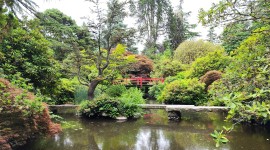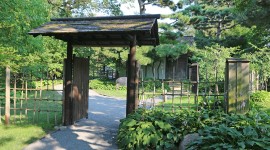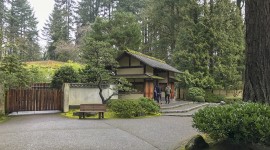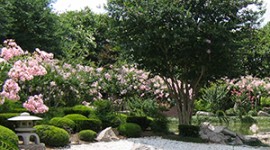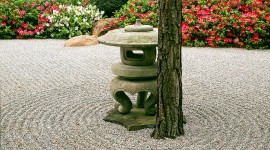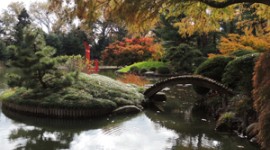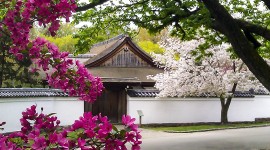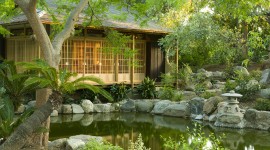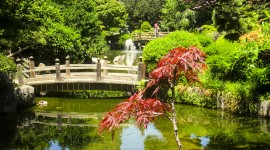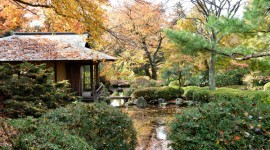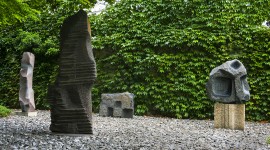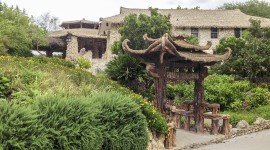Japanese
From the early-twentieth century, Japanese gardens have found enthusiastic proponents in the United States. These gardens in America primarily reference three Japanese garden design typologies: Shinden (strolling gardens), Tea House (viewing gardens), and kare-san-sui (Zen gardens). Japanese garden aesthetics have roots in Chinese prototypes and design principles; however, forms evolved in very different ways, due in part to the influence of “Chan” (or Zen) Buddhism and to Japan’s animistic Shinto heritage.
Shinden-style pleasure gardens typically cover several acres, and feature naturalistic ponds, bonsai-trained specimen plants, rustic shelters, and paths and bridges leading to points from which the garden is revealed, enclosed by woodlands and hills. The Tea House style garden frames and enhances the Tea Ceremony experience, but the primary Tea House garden is an enclosed composed landscape, for viewing only. The kare-san-sui or Zen or ‘dry’ garden typically is walled, with raked gravel and stones that are selected and sited to induce reflection on life and the universe. The aesthetic desire underlying each typology typically includes the registration of seasons through plant selection, a preference for balance rather than formal symmetry, and an appreciation of space, simplicity, and the absence of pretense. As with Chinese gardens in America, the cultural significance of Japanese garden prototypes often was lost in translation.






